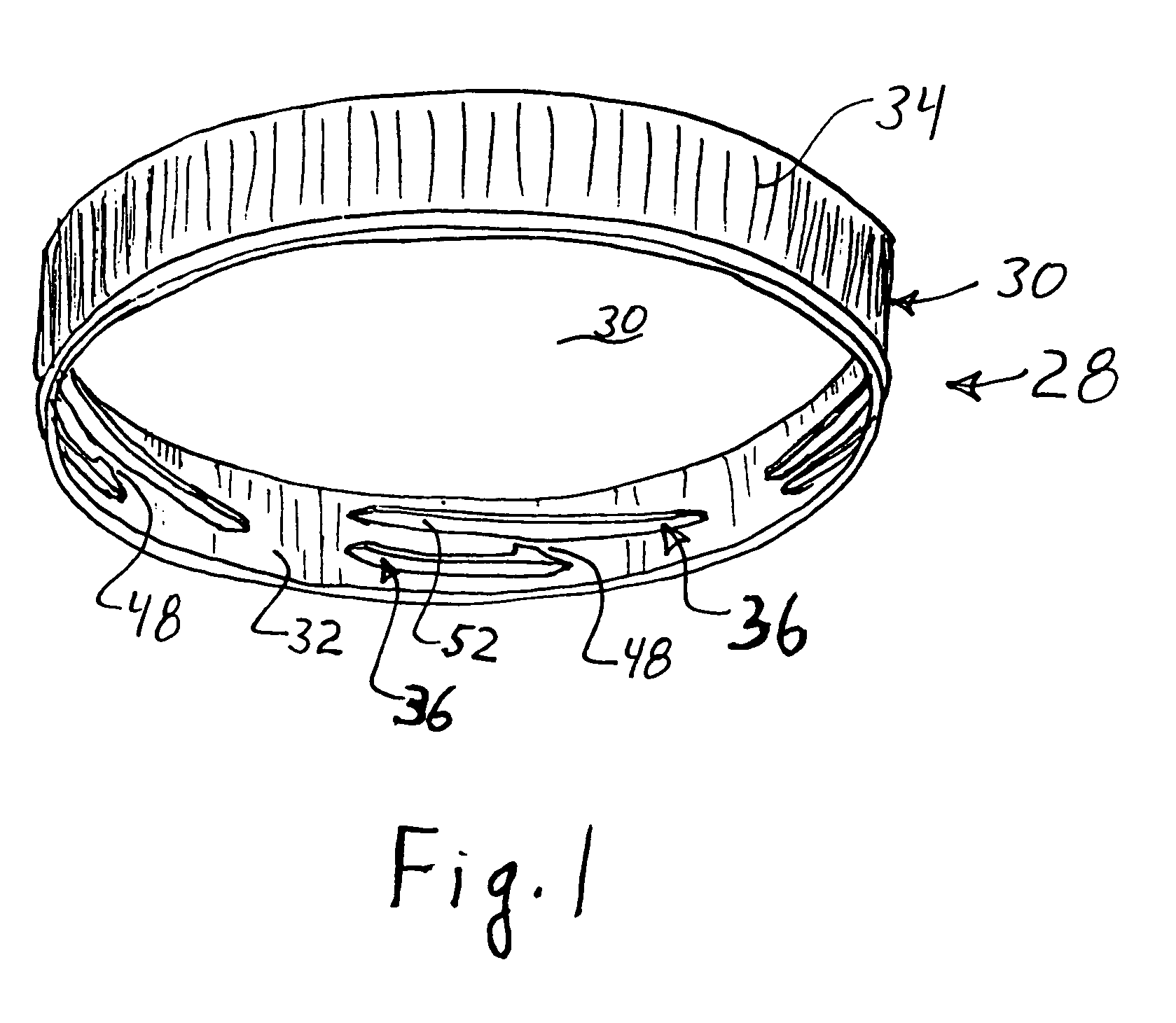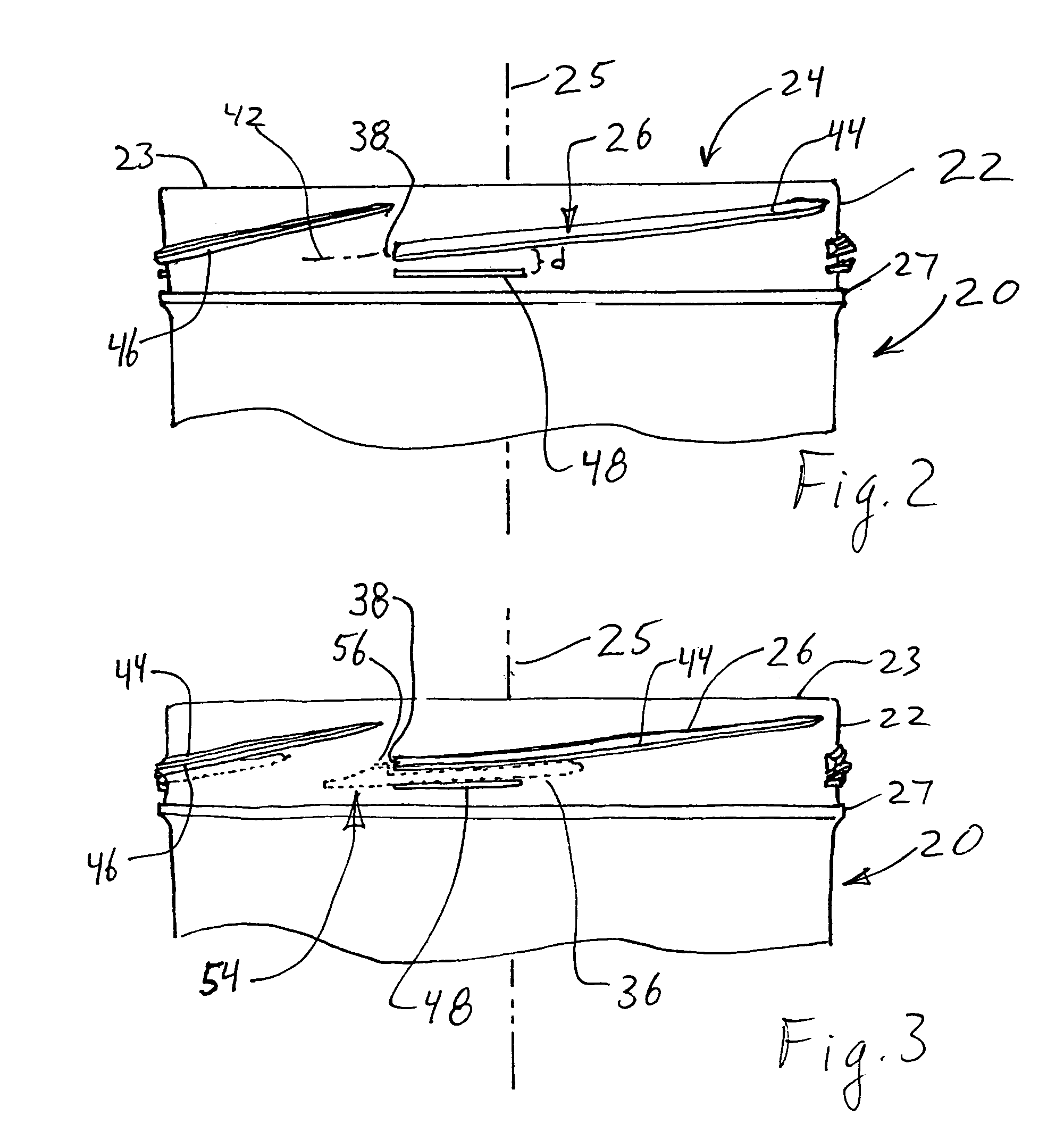Child resistant container and cap
a container and cap technology, applied in the field of push-to-turn containers and caps, can solve the problems of requiring strength to push down and release the locking mechanism, and it is difficult for seniors to use containers and caps with this type of locking mechanism, so as to reduce the force used to unlock the cap of a container, the effect of easy manufacturing
- Summary
- Abstract
- Description
- Claims
- Application Information
AI Technical Summary
Benefits of technology
Problems solved by technology
Method used
Image
Examples
Embodiment Construction
[0043]Referring to FIGS. 2-4, a container 20 has a neck 22 defining an opening 24 to the inside of the container. The neck 22 and opening 24 are typically cylindrical and centered about longitudinal axis 25 of the container 20. The neck 22 may be an identifiable portion of different thickness than the body of the container 20 as shown in FIGS. 2-3, or it may be of the same thickness as the body and simply reflect the portion of the container adjacent the opening 24 that is threaded or bears the locking components as in later embodiments of the container 20. One or more container threads 26 are formed on the neck 22 and typically extend along a helix concentric with the longitudinal axis 25. The threads 26 can be internal or external, but are preferably external threads. The depicted container 20 has a flange 27 around its exterior circumference against which the lower edge of the cap 28 abuts, but the flange is optional.
[0044]Referring additionally to FIGS. 1 and 5, a cap 28 is size...
PUM
 Login to View More
Login to View More Abstract
Description
Claims
Application Information
 Login to View More
Login to View More - R&D
- Intellectual Property
- Life Sciences
- Materials
- Tech Scout
- Unparalleled Data Quality
- Higher Quality Content
- 60% Fewer Hallucinations
Browse by: Latest US Patents, China's latest patents, Technical Efficacy Thesaurus, Application Domain, Technology Topic, Popular Technical Reports.
© 2025 PatSnap. All rights reserved.Legal|Privacy policy|Modern Slavery Act Transparency Statement|Sitemap|About US| Contact US: help@patsnap.com



